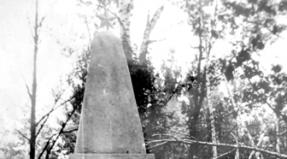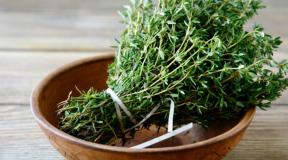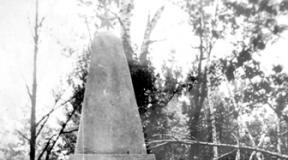Does cotton grass grow in the forest? Cotton grass (Eriophorum vaginatum L.). Use as an ornamental plant
Syn: cat, white lumbago.
Perennial herbaceous plant, forming dense turf. Shows pronounced medicinal properties, in particular anti-inflammatory, diuretic, etc. Valuable early spring food for many wild animals (deer, elk, etc.).
Ask the experts a question
In medicine
Cotton grass is not recognized by official medicine, since it is not a pharmacopoeial plant. At the moment the plant is used only in folk medicine as an anti-inflammatory and diuretic.
Contraindications and side effects
As such, vaginal science does not know any contraindications to the use of cotton grass. The plant is non-poisonous, but despite this, when using its beneficial properties for medicinal purposes, the correct dosage should still be observed, and consultation with a doctor is advisable. Experts do not recommend using cotton grass during pregnancy, breastfeeding and childhood, due to little knowledge of the plant.
On the farm
Cotton grass plays an important role in peat-forming processes, making up the bulk of cotton grass peat.
In the light industry, cotton wool puffs, as well as other species, were actively used at the beginning of the twentieth century, especially in paper production, in textile production in the manufacture of cloth fabrics, for stuffing pillows, and also as an admixture to sheep wool, cotton, and silk.
In landscape design
Cotton grass is very decorative during the fruiting period, thanks to the pure white or bright red puffs on the fruits. It is promising for use in landscape design when designing reservoirs, river banks, ponds.
In other areas
Cotton grass vaginalis all year round is a valuable food for all herbivores of the tundra, including deer and elk, as well as waterfowl (for example, geese, ducks, etc.). In veterinary practice, a decoction of cotton grass herb is used to treat enteritis and colitis in calves.
Classification
Cotton grass (lat. Eriophorum vaginatum) is the type species of the genus Cotton grass (lat. Eriophorum), of the sedge family (lat. Cyperaceae). The genus includes about 20 species of herbs growing in cold, temperate and partly subtropical zones of the Northern Hemisphere. Of these, 1 species is in South Africa and 14 species are in the territory of the former USSR, growing mainly in the tundra, forest zone and alpine mountain belt.
Botanical description
Cotton grass is a perennial, 30-90 cm in height. Forms dense turf and hummocks. The leaves are green, numerous, very narrow, up to 1 mm wide, basal, three-rowed, flat or linear-subulate, triangular, with closed sheaths without a tongue or with a membranous narrow border or cilia. Stem leaves with an underdeveloped blade and a swollen sheath. The inflorescence is capitate, consists of a single apical spikelet 3-4 cm in diameter. The flowers are inconspicuous, very small, bisexual, protogynous. The perianth is reduced to thread-like bristles (hairs), which grow strongly during fruiting and form a large white puff that looks like a piece of cotton wool. The biological significance of the hairs is great - an adaptation to anemochory and fixation of seeds on a bare, moist substrate due to their hygroscopicity. Ovary superior, 1-locular. The gynoecium is syncarpous, consisting of 3 carpels. The fruit is nut-shaped. It blooms in April-May and overwinters in a green state.
Spreading
The plant is widespread, especially throughout the north European Russia, usually in the non-chernozem zone, as well as in the zone of deciduous forests, in the steppe zone it becomes very rare, and in the south it practically disappears. Prefers sphagnum and lowland swamps (an edifier of swampy moss tundras), as well as swampy pine forests, often in large numbers. It often forms hummocky tundras on ridges or flat areas in the northeast. It also grows in both dry and watered parts of swamps.
Regions of distribution on the map of Russia.
Procurement of raw materials
Cotton grass is usually used as a medicinal raw material. The raw materials are collected during the formation of white tufts and dried as usual. At the same time, the fluffy spikelets themselves are collected separately. Store raw materials in paper bags in dry rooms.
Chemical composition
Chemical composition Cotton grass vaginalis has not been studied enough. The epidermis of leaves and stems is impregnated with silica (silicic acid). Found in rhizomes essential oil. In addition, the content of proteins, sugars, vitamins and microelements in cotton grass is quite high.
Pharmacological properties
Cotton grass has anti-inflammatory, diuretic, analgesic, anticonvulsant, and sedative properties. It has a very positive effect on the functioning of the gastrointestinal tract, as well as on increased irritability. Cotton grass flushes uric acid salts from the body.
Use in folk medicine
Cotton grass has valuable medicinal properties and is used very effectively in folk medicine as an anti-inflammatory and diuretic. An infusion of the herb with cotton grass fruits is recommended as an analgesic, anticonvulsant, and sedative. Used for gastrointestinal diseases and disorders of the digestive tract, as well as to relieve pain due to intestinal tenesmus, arthritis, and rheumatism. A decoction of the grass and fruits of cotton grass is used in folk medicine as a sedative for various nervous disorders, epilepsy, etc. A decoction of the plant's herb is also used for various infections, diarrhea and intestinal inflammation. Cotton grass grass in the form of napara is also used as a diaphoretic for colds and fever. Cotton grass steam is used internally (long-term) for gout and joint pain, as it flushes uric acid salts from the body, and also externally - in the form of local baths and warm poultices to the sore spot. The spikelets of the plant are brewed as tea and used in the same cases.
3. Biological encyclopedic dictionary/ Ch. ed. M. S. Gilyarov) 2nd ed., corrected. M.: Sov. Encyclopedia. 1989.
4. Elenevsky A.G., M.P. Solovyova, V.N. Tikhomirov // Botany. Systematics of higher or terrestrial plants. M. 2004. 420 p.
5. Polozova T. G. On the ecological and biological characteristics of species of the genus Eriophorum L. in Western Taimyr // Biogeocenoses of the Taimyr tundra (Ed. B. A. Tomilin). L.: Nauka, Leningrad department, 1980. P. 131-144.
6. Skvortsov V.E. Flora of Central Russia. M. 2004. 481 p.
7. Timokhina S. A., Bondareva N. V. Eriophorum L. Cotton grass // Flora of Siberia. T. 3: Cyperaceae / Comp. L.I. Malyshev et al.: In 14 volumes - Novosibirsk: Science, Sibirsk. department, 1990. T. 3.S. 11-15.
8. Yuzepchuk S.V. Cotton grass (Eriophorum L.) // Flora of the USSR. In 30 volumes / Ch. ed. acad. V. L. Komarov; Ed. volumes B.K. Shishkin. M.-L.: Publishing house of the USSR Academy of Sciences. 1935. T. III. pp. 26-37.
9. Shantser I.A. Plants of central European Russia (Field Atlas). M. Publishing house KMK. 2007. 470 p.
Cotton grass is a rather rare plant in landscape design. Despite the fact that she feels good in different climatic zones in wildlife, it will not take root in every area. Before planting it near the house, you need to make sure that the owner will be able to maintain all the conditions for the successful growth of cotton grass. There are certain risks associated with this plant that you need to be prepared for.
Brief description and photo of cotton grass
Landscape designers love cotton grass for its hardiness and decorative inflorescences in the form of soft balls
This plant is found in swamps almost throughout Russia; it is frost-resistant and moisture-loving. It belongs to the sedge family, that is, it is a tall grass from 30 cm (some varieties may be lower). Many people know cotton grass because of its small white inflorescence that resembles a fluffy ball of cotton wool. The leaves are bright green, dark, and quite dense. There are about 30 species of this plant in total, but only a few of them are used in landscape design.
In nature, cotton grass fields look truly fantastic
This plant is perennial. It begins to bloom every year in the spring, with the arrival of warm weather, with pale yellow flowers, after which a puff is formed, which is of main value when decorating a site. Growing in one place for a long time, it forms voluminous hummocks. It reproduces mainly due to the root system, so to prevent cotton grass from taking over the entire area, new shoots will have to be uprooted annually. The fluffy “caps” can remain on the plant until late autumn, but usually begin to dry out at the end of summer.
Properties and use in folk medicine
Cotton grass has become widespread in folk medicine, but official medicine does not recognize its medicinal properties and cannot be found in pharmacies. People have used this plant for centuries inflammatory processes in the body. This culture has a pronounced diuretic effect and can remove uric acid salts.
For problems with the gastrointestinal tract, a decoction of this herb helps relieve pain, improves digestion, and acts as a mild laxative. It has a sedative property; an infusion of dry herbs is drunk for insomnia and anxiety. In some cases, the decoction is used as a local application for joint pain.
What varieties can be planted for cultural cultivation?
Of the 30 varieties of this plant, the following are usually used in landscape design:
- vaginal swamp (for a beautiful puff);
- Scheichtser (for low height);
- narrow-leaved (for an inflorescence consisting of several flowers).
Less decorative are multi-spikelet and broad-leaved. Cotton grass is often used for planting on the site. The height of this species is from 30 to 80 cm, the flower is about 3 cm in diameter, dense, and has a uniform white color. The flower is pale yellow, inconspicuous, appears with the first warmth. By the beginning of summer, a powder puff forms in place of the flower, which acquires a brown tint by autumn. As ornamental plant the flowers are no longer usable, so they can be cut off. This will not affect the propagation of the crop. Loves light and moisture, not suitable for southern Russia. Most often used to decorate ponds.
A good option for planting cotton grass would be to place it in the coastal zone of an artificial reservoir on the site
For an area without a pond, use Scheichzer cotton grass. She is short in stature, from 10 to 30 cm, and her puffs are very voluminous. It does not form tussocks during growth, so it can be planted on a lawn with decorative forbs. This is a frost-resistant species, suitable for growing in northern regions with short summers and snowy winters. Loves open space and acidic soil.
White clumps of cotton grass will add extraordinary beauty to a green lawn; it goes well with other ornamental types of grasses
Angustifolia cotton grass also likes cool weather, but is very sensitive to moisture and light. It is found throughout Russia, including summit swamps in the mountains of the South. The height can reach 80 cm, and the less space this type has, the higher it grows. The puff is white, loose, and the fibers can flutter beautifully in the wind. In early spring, an inflorescence of several spikelets appears, on which pale flowers are formed. Usually there are 4-5 flowers in such an “umbrella”, and then in their place there will be the same number of puffs.
It is better to use cotton grass on your own site without mixing it with other flowering plants.
How cotton grass can be used to decorate an area
In landscape design, cotton grass is most often used to decorate ponds. The plant loves a sufficient amount of moisture and good light. Sometimes gardeners try to create alpine hills using cotton grass, but these endeavors fail.
It is not recommended to plant cotton grass next to other plants, as it has a strong root system, which over time begins to actively develop and can “survive” its less persistent neighbors.
Combinations of white and peach shades are especially charming
The plant loves bright light and open spaces. For this reason, you should not plant cotton grass along the walls of the house; it should be allocated separate place. Along the edges decorative pond you can plant it next to ordinary sedge, but you need to monitor its further spread. In 4–5 years, it is capable of completely populating the banks of a pond, cutting off access to it. Low-growing species can be planted separately on the lawn, but you must also be prepared for the fact that you will have to deal with new shoots in the spring.
Only owners of vast lands can afford to decorate reservoirs with cotton grass.
Planting and further care
For planting you can use:
- seeds;
- ready-made plants.
It must be borne in mind that it is difficult to bring a finished plant from a swamp on your own, since not all cotton grass will take root with damaged roots. But in specialized greenhouses you can order ready-made seedlings, specially prepared for landscaping. It is best to use seeds; you can also buy them ready-made.
The seeds are not soaked in advance, but are planted directly into the ground. Despite the abundance of seeds in the powder puff, this plant does not reproduce by self-sowing. In nature, seeds are carried by grass-eating animals, while the plant itself also reproduces thanks to the root system.
What conditions must be created for cotton grass:
- acidic soil, rich organic substances(you can use cooked with my own hands compost);
- a large amount of moisture (in nature, a plant always has access to water, so it will be most comfortable for it either with daily watering or on the shore of a reservoir);
- good lighting (grows well in open areas of swamps; it will be uncomfortable in the shade of a large tree).
After planting the seeds in the soil, water the bed, and then you can additionally add organic fertilizer or plant humus. In the future, additional feeding of the seedling may be required if it grows poorly. To better retain water at the roots of the plant, you can create a composition of mosses and lichens.
It is important to understand that creating an alpine hill with cotton grass will not work. She does not like dry soil and close proximity to other plants. Ideally, this culture should be created with conditions similar to those natural for its habitat in wildlife. She feels great where many plants do not take root. For this reason, the fluffy beauty is most often used to decorate areas in regions with cold climates.
So, although cotton grass grows in swamps in nature, it is quite capricious in landscape design. At the same time, it does not require careful maintenance and is suitable for people who do not like to tinker in the ground for a long time. You can plant it with seeds or ready-made sprouts, it is only important to choose right place. The soil should be acidic, rich in peat. Cotton grass needs a lot of light and moisture. And in order to avoid colonizing the entire area, it is enough to uproot the new shoots that have appeared on the plants in the spring.
One of the earliest plants of the tundra is cotton grass. Spectacular large hummocky turf, bright greenery and unusual fluffy inflorescences attract attention and look very interesting. The plant is valued not only as a fodder, but also as a valuable peat former, and is also actively used in landscape gardening design.
Cotton grass: distribution
This species, belonging to the genus Cotton grass, has a very extensive range, which includes regions of North America, Eurasia with cold and temperate climate. The northern border of distribution reaches Novaya Zemlya. In Russia it grows almost everywhere, including in middle lane. The most typical habitat of the plant is sphagnum and sphagnum-sedge bogs, mainly upper ones, that is, fed by atmospheric precipitation. This is the main factor by which cotton grass differs from related species (narrow-leaved and broad-leaved). The latter prefer spring and lowland swamps.
In addition, the species actively spreads along overgrown lake shores, in swampy coniferous forests, usually pine, and also in moss tundras. High speed growth and resistance to environmental factors allow the formation of thickets and extensive hummocks in a short time.
Roots, stems, leaves

All representatives of the genus Cotton grass are perennial herbs with a height of 30 to 70 cm, less often 90 cm. During the growth process, they form large and dense turf or hummocks. The species in question, unlike others, has a shortened rhizome with fibrous branched roots, and not creeping. The stem of the plant is erect.
Cotton grass received its name due to the presence of a special part of the leaf located at the very base. It is expanded in the form of a tube or groove and covers a stem up to 12 cm long (pictured above). In the harsh northern climate, it protects the lower basal triangular leaves from frost. Stem sheaths can be red-brown, pink-brown, sometimes with a yellowish tint, and the edges are fibrous.
Flowers and fruits
Bisexual flowers are collected in a single multi-flowered spikelet located at the top of the shoot. A striking feature of the plant genus is the presence of a perianth made of soft and smooth bristles (hairs), most often white. It was this feature that determined the name of the entire genus of plants.
After the vaginal cotton grass (see photo in the article) fades, the hairs greatly increase, many times longer than the fruit, and form a fluffy “cap”, or the so-called puff of ovoid or spherical shape with a diameter of up to 3-4 cm. Their biological significance lies in adaptation to anemochory, that is, the dispersal of seeds by wind, as well as the ability to attach to moist soil due to its high hygroscopicity.
The fruit is an oblong triangular nut, brown and sometimes with a yellow tint, dimensions up to 3 mm in length and 1.3-1.5 mm in width. Flowering periods depend on the place of growth, in Russia - April-May.

Cotton grass: meaning
All representatives of the genus are active peat formers; some species are especially valuable because they make up the bulk of peat, known as “cotton grass”. Previously, puffs were used to stuff pillows, create wicks, hats, tinder, an additive to sheep wool, cotton or linen, silk fabrics and in paper production.
Due to its extensive growing area, cotton grass is an important forage plant, one of the first to appear in the spring. natural areas with poor vegetation (sphagnum and transitional bogs, tundra, swampy deciduous forests). One centner of grass contains 25.2 feed units and significant amount digestible protein (3 kg). The plant is the main component of the year-round diet of reindeer, which even in winter dig it out from under the snow cover. In spring, moose, lemmings, and waterfowl feed on it.
Use in folk medicine

The plant is not recognized as a medicinal plant by official medicine. However, in folk methods treatment it is used as a diuretic and anti-inflammatory agent. Science has not established any contraindications as such; the plant is not poisonous. However, like any other medicine, it must be used with caution, observing the dosage.
The chemical composition of cotton grass has not been fully studied. It is known that the epidermis of stems and leaves is impregnated, which explains their rigidity. The rhizome contains essential oil. In general, the plant is rich in protein, sugars, microelements and vitamins.
Cotton grass has diuretic, anti-inflammatory, analgesic, and sedative properties, has a positive effect on the gastrointestinal tract, relieves irritability, and helps flush out uric acid salts from the body. The herb of the plant is used to prepare infusion, decoction, steam, spikelets - for brewing.
Use as an ornamental plant
In gardening floriculture, plants are used very actively, including cotton grass. A description of the plant would be incomplete without mentioning its use as an ornamental. Large and dense turfs of bright green color look bright and interesting, the effect is doubled with the appearance of numerous snow-white “powder puffs”.
Since the plant is a typical inhabitant of waterlogged flood meadows and swampy forests, it must choose an appropriate place on the site. It is best to plant cotton grass in shallow water, along the edges of a pond, artificial reservoir or swamp. In this case, the lighting should be full, only light shading is acceptable. The plant prefers acidic water and soil (silty, with the addition of peat).

The main care for cotton grass in the garden will be to maintain the required level of soil moisture, which should not dry out. It is recommended to remove wilted inflorescences early in the spring, since the seeds remain on the plants for a long time - this is the growth of the turf. Representatives of the Sedge family are prone to rapid and uncontrolled growth.
Use cotton grass when decorating rockeries, heather gardens, and the banks of reservoirs, planting it in groups or small tracts. Faded inflorescences look beautiful when decorating bouquets of fresh flowers or
is one of the plants of the family called sedges, in Latin the name of this plant will be as follows: Eriophorum vaginatum L. As for the name of the vaginal cotton grass family itself, in Latin it will be like this: Cyperaceae Juss.
Description of vaginal cotton grass
Cotton grass is known by the popular name kotka and white lumbago. Cotton grass is a perennial herbaceous plant that will form tussocks or dense turf. The stems of this plant will be quite numerous, obtusely triangular and straight, and their height will fluctuate between thirty and one hundred centimeters. The leaves of cotton grass will be narrow, grooved, triangular, and along the edge they will be equipped with small spines; the torn sheaths are quite long: this figure can reach about twelve centimeters. The spikelet of this plant will be single, when the fruits are spherical or oval, and in diameter it reaches about four centimeters. The bracts of this plant are painted in light gray tones.Cotton grass blooms in early spring. Under natural conditions, this plant is found in Siberia, Ukraine, the European part of Russia and in the following areas of the Far East: the Amur region, Primorye and the Kuril Islands. For growth, cotton grass prefers tundra and sphagnum bogs. It is noteworthy that this plant is a very important peat former.
Description of the medicinal properties of cotton grass
Cotton grass is endowed with very valuable healing properties, with therapeutic purpose It is recommended to use the grass and fruits of this plant. The term grass includes flowers, stems and leaves.An infusion prepared from the fruits and grass of cotton grass is recommended for use as an analgesic, sedative and anticonvulsant for various gastrointestinal diseases and rheumatism.
For irritability, it is recommended to use the following very effective remedy based on this plant: to prepare such a healing remedy, you will need to take one tablespoon of crushed dry cotton grass herb per approximately one full glass of boiling water. The resulting healing mixture should be infused for about one hour, after which such a mixture based on this plant must be filtered very carefully. Take the resulting medicinal product based on cotton grass three times a day, regardless of food intake, when irritability occurs.
In case of infection, it is recommended to use the following very effective remedy based on this plant: to prepare such a medicine you will need to take one tablespoon of fluffy spikelets of cotton grass in about two glasses of boiling water. It is recommended to first leave the resulting healing mixture to infuse for about fifteen to twenty minutes, after which this medicinal mixture based on this plant must be filtered very carefully. Accept what they receive healing agent based on cotton grass, one glass per day, warm. It should be noted that in order to achieve the greatest effectiveness when taking such a healing remedy, it is important not only to strictly follow all the rules for preparing this remedy, but also to carefully follow all the rules for its administration. Thus, if used correctly, such a healing remedy based on cotton grass will have a positive effect quite quickly.



















